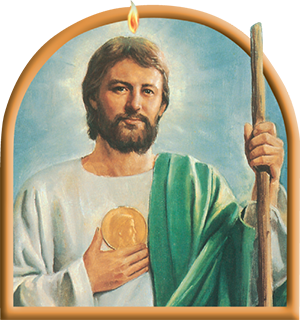What's the difference between All Saints and All Souls
ON ALL SAINTS DAY, Catholics honor and pray for the intercession of canonized saints and celebrate the communion of saints--all the baptized in heaven, purgatory, and on earth. On All Souls Day, Catholics pray for those souls in purgatory, that they may be hurried along the path to heaven.
Canonized saints are believed to be already in full communion with God. In other words, the church confirms that these souls have made it to heaven. The souls we pray for on All Souls Day are not in heaven yet, but being "purified."
There are varied theological interpretations of heaven, hell, and purgatory. And certainly many Catholics hold personal beliefs about the afterlife that may include only one, two, or all three of these destinations, but official church teaching on the matter does include the existence of purgatory.
The celebration of All Souls Day developed after the idea of purgatory grew in popularity. Because not all the dead were being honored on All Saints Day, another day was set aside on which those souls still in purgatory could benefit from the prayers of the living. All Saints Day is November 1 of every year, and is a holy day of obligation, which means Catholics are required to attend Mass on this day. All Souls Day is November 2 and not a holy day of obligation.
In the first centuries after Christ's death, the word saint was synonymous with martyr, but eventually the definition expanded to mean people who lived exemplary lives according to God's will. Early Christians celebrated the anniversary of the death of a local martyr at the martyr's tomb. Soon, the practice spread beyond the local area, and eventually a commemoration for all saints was established, originally taking place on varied dates including the Friday after Easter and the Sunday after Pentecost. In the ninth century the date of November 1 was set for the Western church. The Eastern church still celebrates All Saints on the Sunday after Pentecost.
The night before All Saints Day is, of course, Halloween, a name that comes from All Hallows' Eve, though its rituals are rooted in a pagan festival centered on death and the coming of evil spirits. Some believe that All Saints Day was moved to November 1 to counteract the ghouls, demons, and devils that were celebrated on October 31.
As Catholics, we pray for the intercession of the saints in heaven to help us in our earthly lives. All Saints Day is essentially a celebration of the lives and deaths of all the saints, especially the lesser-known ones who don't earn frequent mention, and all who are included in the communion of saints canonized or not. It is a day to remember our beloved dead, especially those who passed in the last year. At many parishes, a list of the deceased from the past year is included in the litany of saints.
Catholics believe in the communion of the saints, that all of the baptized in heaven, purgatory, and on Earth remain connected and are part of the one Body of Christ. Theologian Elizabeth Johnson calls All Saints Day the "festival par excellence of the communion of saints, giving comfort and consolation to those who are grieving the loss of beloved persons and awakening in all community members hope and joy in their solidarity with the friends of God and prophets of all ages.
Tara K. Dix is an assistant editor at U.S. Catholic.
